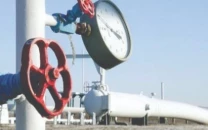Literacy rate in Pakistan slips by 2%
Setback for ministry which painted a rosy picture of the education sector

Speakers note Pakistan ranks near top of the table on illiteracy.
The situation has turned out to be an embarrassment for the federal government as it skipped mentioning figures of FY15 in the Pakistan Economic Survey 2016-17 which were better than the year FY14, just to avoid criticism. This scribe found the missing figures from previous year’s records.
‘Our dream is to make Pakistan 100% literate’
The decline in literacy rate has been witnessed in Sindh, Balochistan and Punjab while it remained stagnant in Khyber-Pakhtunkhwa (K-P).
The drop is also being termed as a setback for the Ministry of Federal Education and Professional Trainings which had been painting a rosy picture of the education sector.
The literacy rate in Balochistan has fallen to 41 per cent in FY16 as compared to 44 per cent in FY15. Sindh has witnessed a whopping fall of 5.0 per cent to 55 per cent in FY16 as against 60 per cent the previous fiscal. The rate in K-P has remained stagnant at 53 per cent since FY14 while Punjab witnessed a 1.0 per cent decline in the rate as compared to the rate the last fiscal.
Interestingly, the total number of enrolments at the national level during FY16 stood at 46.2 million as compared to 43.9 million during FY15, reflecting an increase of 5.0 per cent.
Urban-rural divide
The urban-rural gulf is still wide in terms of literacy rate – standing at 74 per cent in urban areas and 49 per cent in rural areas, pointing to the widening gap between rural and urban education systems. Moreover, the overall literacy rate among the male and female populations is 81 per cent and 68 per cent respectively. A similar trend is glaring in all provinces.
Govt redefines literacy for count
In Punjab, the total literacy rate is 54 per cent among female population and 59 per cent among male population. In rural areas, the count is 44 per cent for females and 66 per cent for males. And in urban area, it is 73 per cent for females and 82 per cent for males.
Balochistan has 24 per cent female and 56 per cent male literacy rate. The figure is 15 per cent for females and 48 per cent for males in rural areas while in urban, it is 44 per cent and 76 percent for females and males respectively.
K-P’s literacy count is 36 per cent in case of females and 72 per cent in case of males. In rural areas, percentage for females is 33 and males 70. While in urban areas, it is 52 per cent and 77 per cent for females and males respectively.
Matter of literacy: Out-of-school children census from 2017
In Sindh, 44 per cent females and 67 per cent males are literate. In rural areas, it becomes 19 per cent in case of female population and 51 per cent in case of male population. In urban areas, it is 65 per cent and 80 per cent for female and male population respectively.
Public sector expenditure on education as percentage of the gross domestic product (GDP) is increasing at a snail’s pace with an estimation at 2.3 per cent during the FY16 as compared to 2.2 per cent in FY15.
Educationists and national campaigners have been pressing the government to allocate 4.0 per cent of GDP to the education sector. The figure was 2.1 per cent in 2013-14.



















COMMENTS
Comments are moderated and generally will be posted if they are on-topic and not abusive.
For more information, please see our Comments FAQ